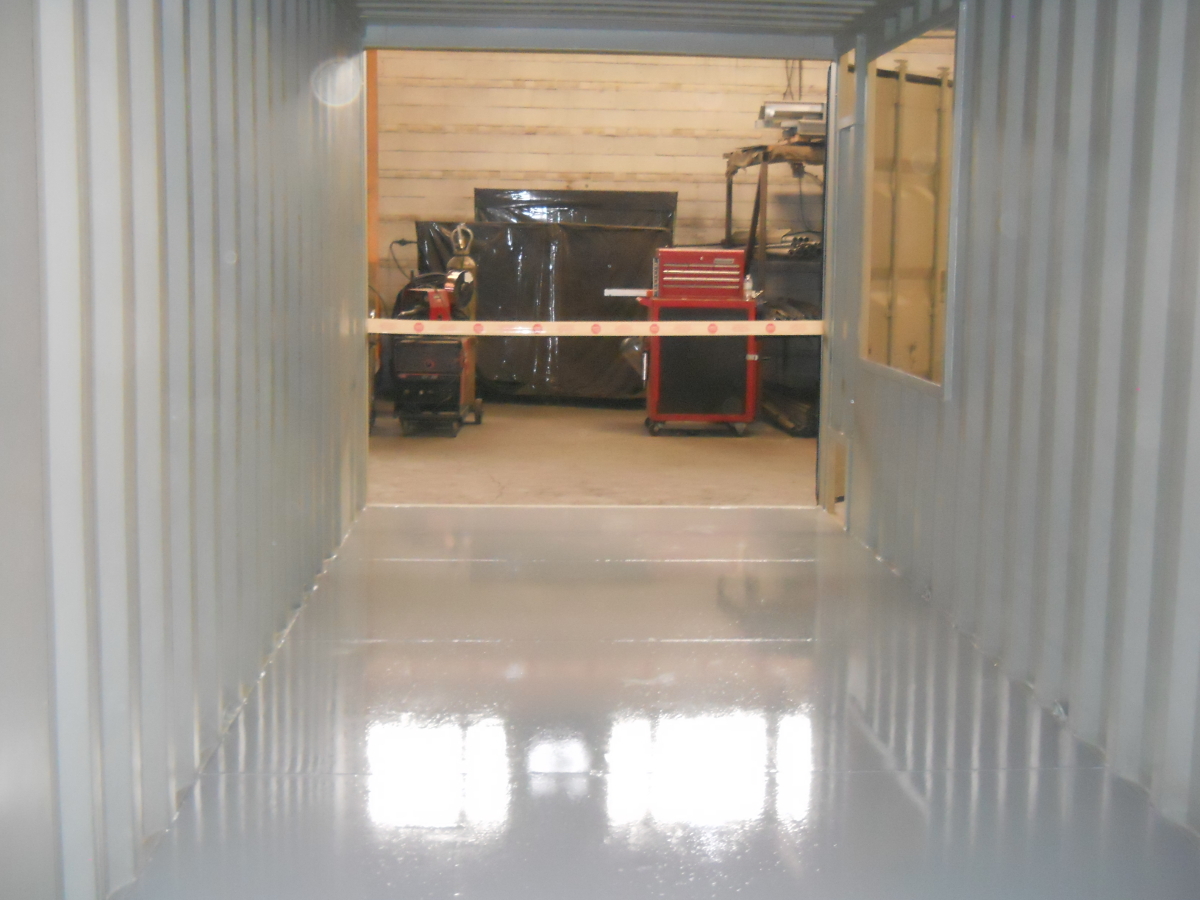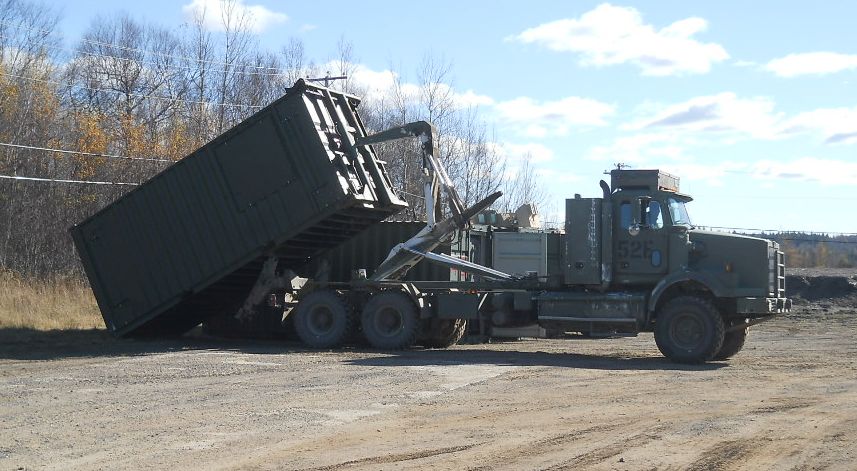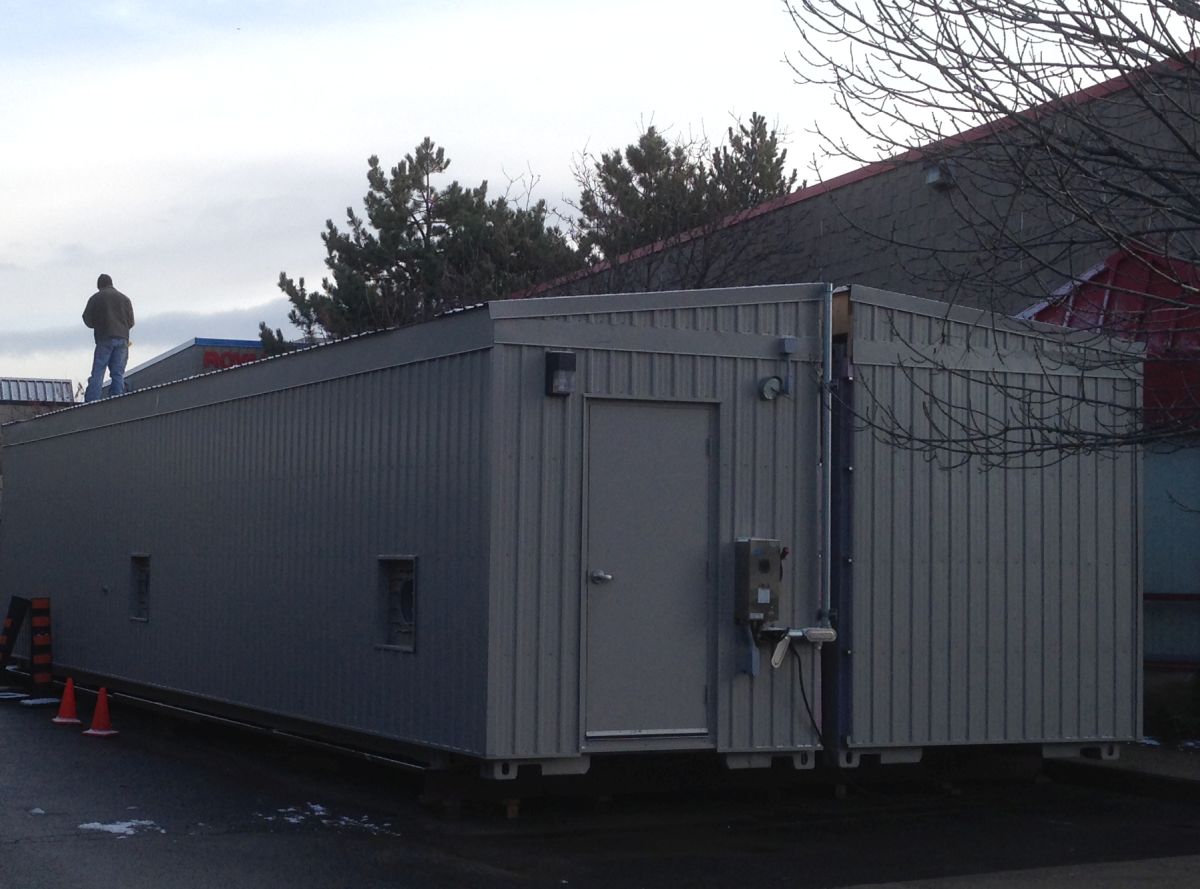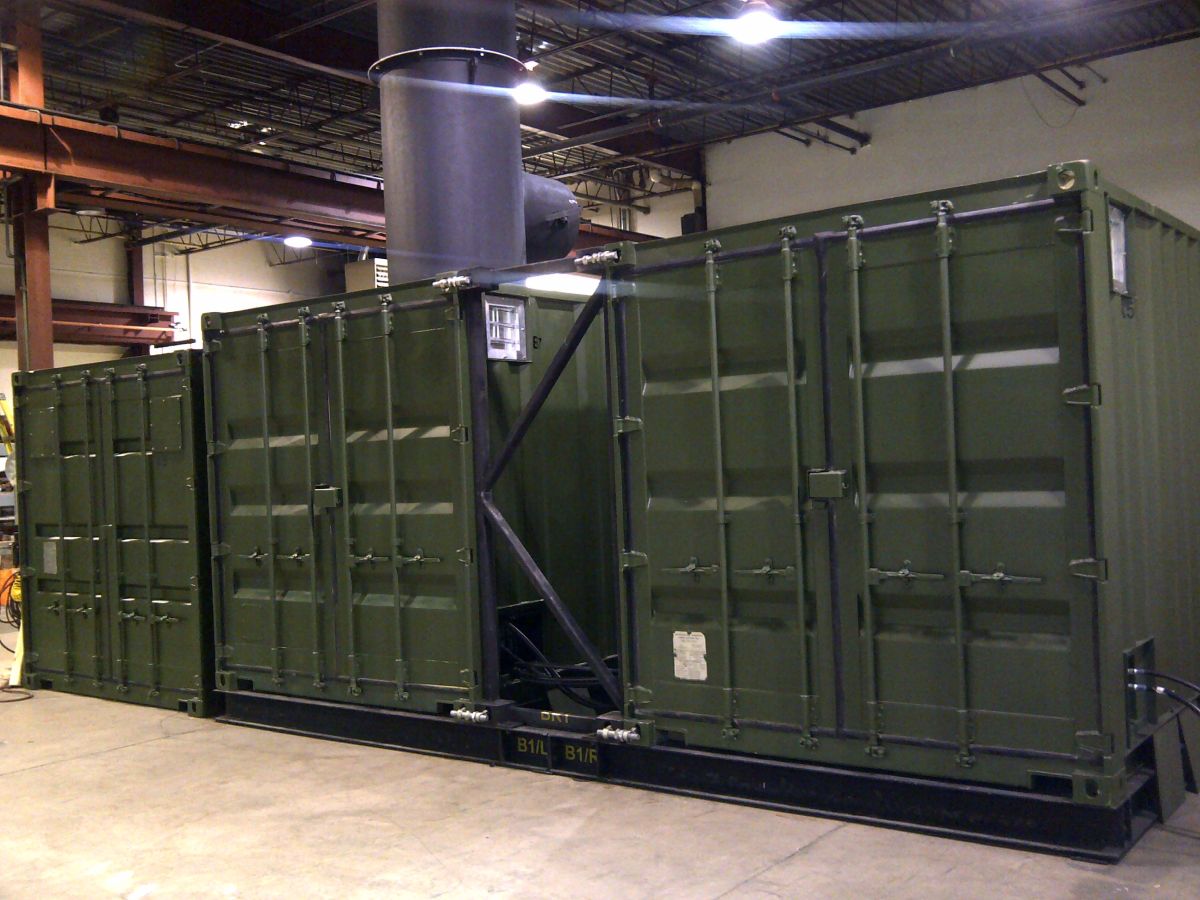Shipping Container Sizes
Shipping Container Sizes

There are many shipping container sizes that can be adapted to all sorts of projects. While the sizes are standardized that applies more to the outside dimensions. The inside dimensions can vary a little based on the manufacturer.
This can be a frustration if you are counting on buying a container thats exactly the same size as the one you bought last time. And it turns out that the new one is a little smaller and wont fit your application.
You can buy a used shipping container in decent shape for a reasonable price globally. Once purchased you have a strong structure with ready made walls and roof and functional locking doors that even without any customization can be a storage shed, garage or tool crib.
Shipping containers are generally made from 3/16" thick Cor-Ten steel. Cor-Ten is a special alloy steel that is rust resistant. This is important for a container that is intended to spend its entire working life in the sea air. The containers have weather seals and locks intended to keep water out.
Cor-Ten steel is like Aluminum in that it the bare metal is designed to form an oxide layer of rust to protect it. Container manufacturers paint the whole container with zinc oxide chromate primer to seal the container against rust.
20 FT Shipping container dimensions

20 ft containers are by far the most popular container size. Typically the exterior dimensions are 20 ft long x 8 ft wide x 8 ft 6 in high (6.06m long x 2.43m wide x 2.59m high) Interior dimensions and construction can vary slightly from one manufacturer to another.
Metal shipping containers can be adapted to many more uses than basic storage. Industrial shipping container sizes are widely used on oil rigs and mining camps for offices where windows and doors have to be installed and often spray foam insulation. Other containers are turned into electrical rooms, pump houses and equipment sheds. They may require different kinds of flooring, wash down walls and flanges build into the walls of the container to allow pipes to enter and exit.
Some shipping container sizes are specialized for use with different industries. Firefighter training is often done in shipping containers converted to burn chambers, mazes and smoke houses. Thick replaceable refractory tiles are used inside the burn chambers so the containers can be burned over and over again. This is much more economical than building a purpose built fire training building since the burn chamber container can be transported to many local fire departments to maximize the number of firefighters getting trained
An example of containerized burn chambers can be found at Flashover Systems website
20 FT Shipping container weight
20 ft shipping container dimensions allow different shipping options. There are trucks purpose built to manage the weight 20 foot containers without the need for cranes.
40 FT Shipping container dimensions

Recently Shipping container architecture has really started to take off, If you live in a country that's not extremely cold, or extremely hot a shipping container house is entirely economical. In parts of the world where you have extreme temperatures, you need to do some modifications to make your cargo container more liveable. Usually this means building some type of insulation.
If you plan to connect your shipping container house to city sewer, water and electrical services you most likely will need to deal with local building codes. This means you will have to have a permit drawing made showing your proposed shipping container home project, its location, what foundation it will sit on and referencing all relevant sections of local building codes that you must obey.
In Rural communities, the building permit procedure may be less stringent. This is why many people build their shipping container houses in the country. In some cases you may decide to build your home "off the grid", with no connections to local services. Instead using solar panels for elctricity and hot water, composting toilets and wood burning stoves for heating.
In any case drawing and design plans may still be required, especially if you plan to insulate and rework the openings in the container. Sheet metal shops will need drawings if you wish to fabricate Z Bars to hang drywall inside the container. A draing will help a spray foam insulation contractor know exactly where insulation has to be applied. Door and window suppliers will need drawings and sketches so they can determine the best way to fit the raw steel openings in your shipping container home.
shipping container housing does has some advantages and disadvantages. Narrowness. A standard 20 or 40 container is 8 feet wide outside dimension. Once inslated and drywalled the raming space is a little narrow compared to a normal home room dimension. This makes the placement of normal sized furniture difficult while still having enough room for humands to move around.
The corrugated steel wall construction is fine if you just plan to paint. But the moment you need to insulate you need to attach bars or wood framing usually on the inside of the container. You cant screw through the metal wall without having screw threads poking outside. So often sheet metal Z bars are welded to the inside walls. The Z bars need enough depth for styrofam insulation or spray foam. As well hols need to be provided in the bars for electrical, plumbing and ventilation if required. The corrugations in the metal exterior make sealing windows and doors a little more challenging
The 3/16" steel contruction means that a plasma torch will be needed to make significant amount of cuts in structure. A hand grinder can be used but this is tough going if you have a lot of openings to cut. The steel is also very heavy with sharp edges and you need to think about ways to safely handle it once it gets cut out. As well, a container gets a lot of its strength fromt he corrugated walls. If a significant amount of wall is cut away, the container may warp.
The most common sizes of shipping containers for sale are 20 and 40 foot containers.
There are however many other sizes including 10 foot boxes used by the military, 53 foot long extended containers. There are also high roof versions of 20, 40 and 53 foot containers. There are containers built without roofs and walls. All containers are built to standard dimensions dictated by the ISO. This ensures that dock cranes and container ships can pack the containers with the most economical use of space.
Containers are mostly put together with standard components such as corner blocks, doors, locks and hinges. Companies sell the building blocks so that fabrication shops can build custom containers. ISO rules govern many aspects of the container design, such as flush mounted windows and doors. This is to ensure containers can be stacked normally in a cargo hold.
40 FT Shipping container weight
12 Foot wide shipping container and others
The 12 foot wide shipping container is a custom size developed to meet the needs of container home builders. Most containers are a standard 8 foot width. This does not leave a lot of width to work with when you deduct the space for insulation and interior drywall.
12 foot and 16 wide shipping container sizes can be built by splitting and 8 foot container straight down the center and adding in new steel to bring the width to 12 feet. It can also be done by joining 8 foot containers together and removing adjoining walls.

Still another method is to mount containers on a base frame and provide brackets to separate the containers to allow room for equipment in between the two containers